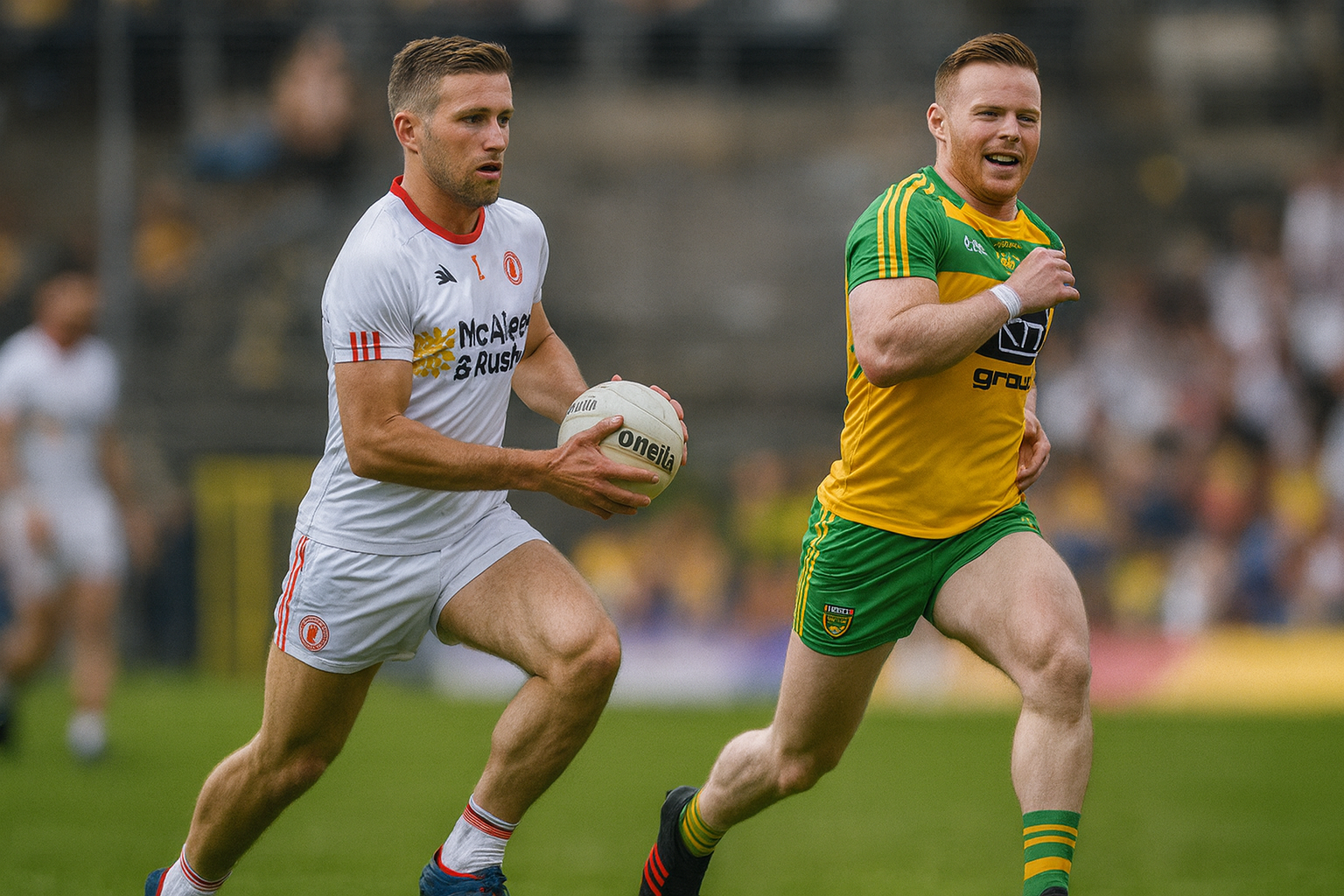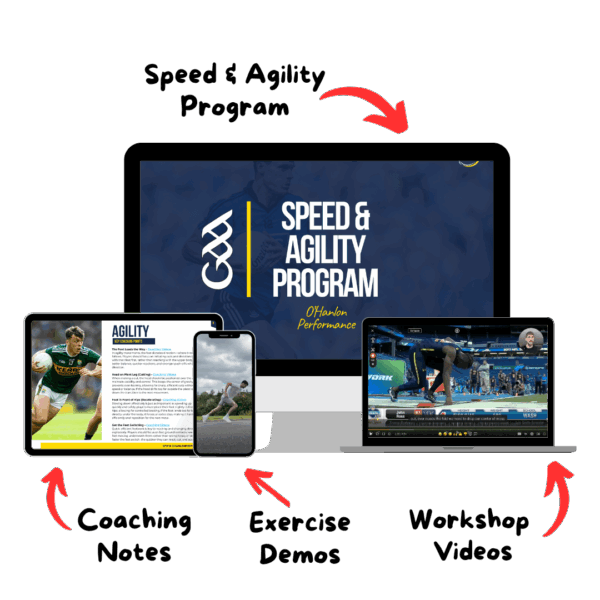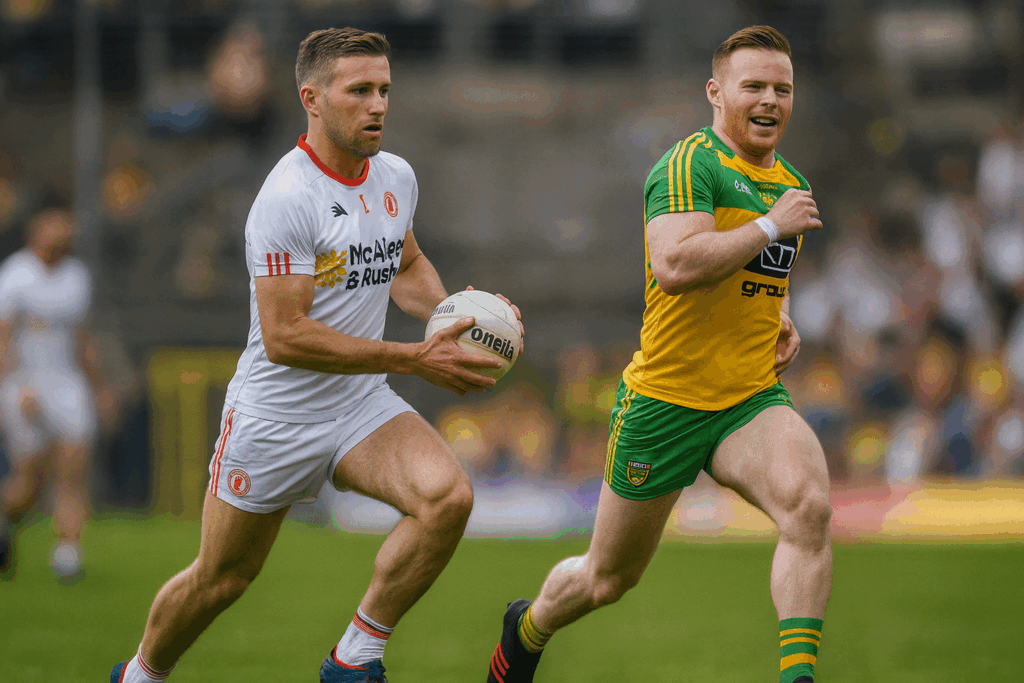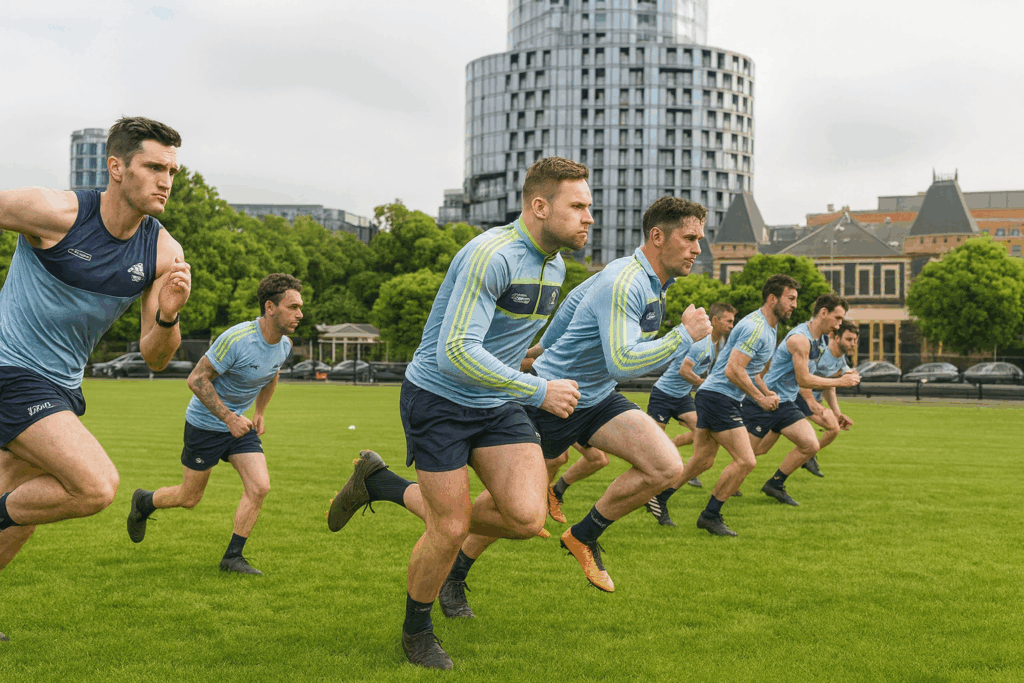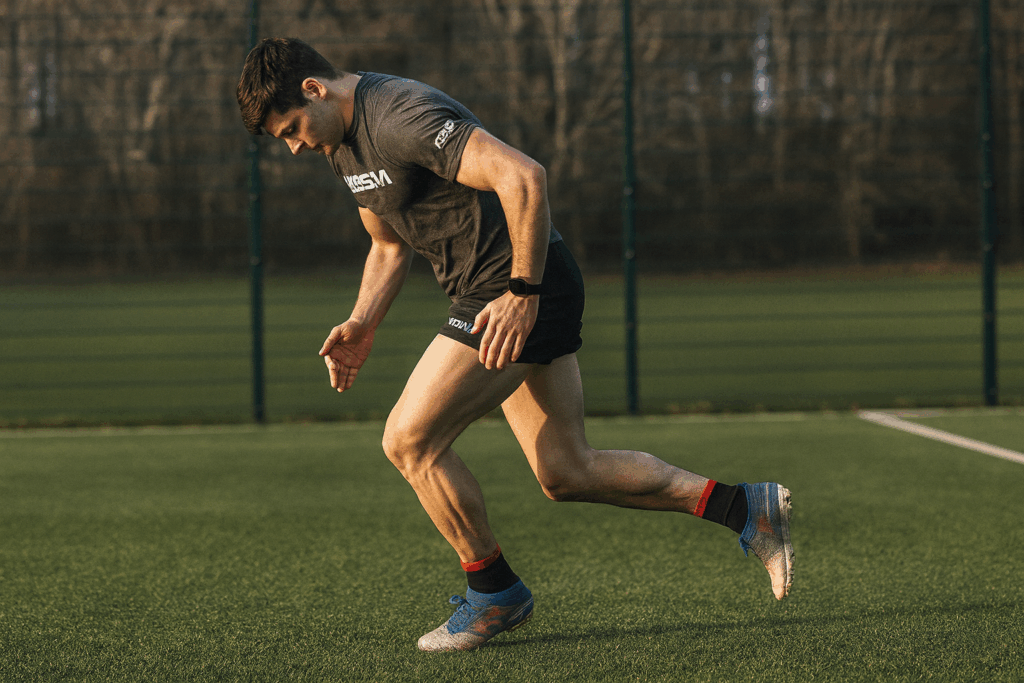Introduction
If you’re serious about improving your first 5–10 metres on the pitch, you need more than just sprints. You need to train how you accelerate.
These three drills are designed to develop the mechanics behind elite-level acceleration: posture, projection, and leg timing. All three exercises help you:
- Stay low and powerful in your first steps
- Improve leg switch speed
- Avoid inefficient “popping up” patterns
Let’s dive in.
1. The Squatted Run
Purpose: Train forward projection and body angle control during early acceleration
How to Do It:
- Start in a squatted position with a forward torso lean
- Heels off the ground, weight over the forefoot
- Imagine you’re running through a low tunnel between cones
- The key: don’t pop up as you accelerate – stay squatted and drive forward
Why It Works: This drill teaches GAA players to stay in a mechanically strong shape when driving out of a break or transition. It reinforces shin drop, hip projection, and forward lean – the exact posture seen in top-level sprinters and elite accelerators.
Coaching Cues:
- “Chest forward, heels off”
- “Run through the tunnel, not up and out”
- “Stay low, stay long”
2. Half-Kneel Start
Purpose: Build projection and shin angle from a static start
How to Do It:
- Start in a half-kneeling position with your lead foot flat and your back knee down.
- Drop the front shin forward and let the heel rise
- Project yourself through a low doorway, not up into the air
- Focus on getting the chin down and body driving forward
Why It Works: This drill isolates the acceleration pattern from a dead stop. It teaches how to angle your shin and hips to generate horizontal force. It also helps break the habit of “standing up” too early in a sprint.
Coaching Cues:
- “Chin down, heel up”
- “Drive through the doorway”
- “Shin forward, hips forward”
GAA Speed & Agility Program I
Become faster, sharper, and more explosive on the pitch where it counts.
✅ Two Speed & Agility Sessions
✅ Coaching Workshop Videos
✅ Exercise Demo Videos
Built for GAA. Designed for results.
3. Raised Platform Pickup Start
Purpose: Improve leg timing and cycling mechanics off the start
How to Do It:
- Use a low platform (2–3 inches) like a yoga block or book
- Back foot rests lightly on the platform, pre-pressing into it
- Front leg has a slight lift, ready to drop
- Before the front leg hits the ground, the back leg cycles through quickly to initiate the next step
- Maintain a squatted, folded posture throughout
Why It Works: Speed isn’t just force – it’s timing. This drill helps players learn proper leg sequencing, improving stride frequency and reducing time on the ground.
Coaching Cues:
- “Back leg drives through before front leg hits”
- “Spin the legs, don’t stomp”
- “Stay low and cycle quickly”
Conclusion
Acceleration is a skill.
And like any skill, it needs smart repetition, specific feedback, and the right drills. These three exercises will build the mechanics that make your first few steps sharper, more efficient, and far more explosive.
Start with 2–3 sets of each drill, 2–3 times per week before training. Focus on quality, not quantity.

